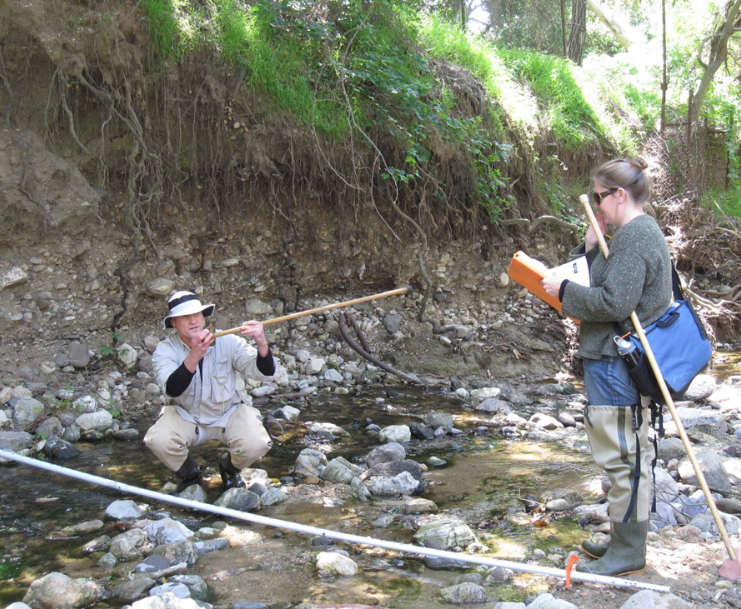SCCWRP models flow patterns at 850 stream sites for ELOHA study

SCCWRP in October finished modeling hydrological flow patterns for about 850 ungaged bioassessment stream sites across Southern California, a milestone in a three-year project that aims to use a scientific framework known as the Ecological Limits of Hydrologic Alteration (ELOHA) to evaluate environmental flow requirements.
The project, which kicked off in 2013, seeks to link changes in hydrology to changes in biological condition, allowing scientists to estimate the hydrological conditions necessary to support in-stream biological communities.
Because most of the 850 stream sites being used for the study are ungaged, the first step was to model flow patterns at each site. Modeling is the only cost-effective way to generate time-series flow data for all 850 sites in the study.
SCCWRP developed 45 hydrologic models, based on locations of existing long-term stream gages, to represent hydrological conditions at the 850 stream sites.
Then, SCCWRP developed a model-assignment algorithm to appropriately match each bioassessment stream location to one of the 45 models.
Once assigned, flow was modeled at all 850 sites for both current and natural conditions to produce estimated hydrologic change. These hydrologic changes will be used with the existing bioassessment data to produce flow-ecology relationships.
Later this month, SCCWRP and its partners will begin testing the new tools to conduct an ELOHA analysis of the San Diego River Watershed. This case study will allow study participants to gain an understanding of how the flow-ecology analysis can be used to inform management decisions and to troubleshoot challenges and obstacles associated with running an ELOHA analysis.
By early 2016, SCCWRP expects to release preliminary estimates for the in-stream flow requirements within the San Diego River Watershed.
For more information, contact Dr. Eric Stein.
More news related to: Ecohydrology, Top News